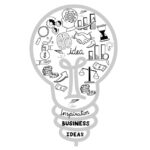Redefine business through Industry Internet of Things
 The fourth wave of the Industrial Revolution, Industry Internet of Things (IIoT) is not only redefining the businesses but also the complete ecosystem. McKinsey reported that B2B IIoT applications would contribute around 70% to the global estimated market of $11.1 trillion by 2025. The traditional business models will be no help to the existing business to gain a competitive advantage, and thus business leaders have to rethink and discover new ways,
The fourth wave of the Industrial Revolution, Industry Internet of Things (IIoT) is not only redefining the businesses but also the complete ecosystem. McKinsey reported that B2B IIoT applications would contribute around 70% to the global estimated market of $11.1 trillion by 2025. The traditional business models will be no help to the existing business to gain a competitive advantage, and thus business leaders have to rethink and discover new ways,
designs and business models embracing IIoT.
Non-ownership business models provide an excellent opportunity to carve mutual benefits by sharing opportunities and downsides and taking responsibility for the uncertainty. Watts in his service provisioning business model lowered the adoption barrier for his revolutionary manufacturing technology by sharing uncertainty. Business models help businesses to translate technology in the economic value, and with the fourth wave of technology, businesses must be ready to discover an appropriate business model.
To innovate in the IIoT environment, business leaders need to identify:
– Value proposition
– Critical resources to capture value
– Partners and complementors to deliver value
Business model design for IIoT
There exist multiple components to design models, but not all components are equally beneficial for IIoT. Moreover, some components are unlikely to be used in the context of IIoT.
Business leaders need to understand the potential of:
– Value proposition: Identify the “value-in-use” opportunities. Don’t just fix the products and services. Manufacturers can map their usage of machines (buy or lease) with real-time monitoring and access, remote control, and transparent usage.
– Value capture: Develop new ways to capture value. Manufacturers can sell machine performance and predictive maintenance along-side with the machines. Look for options to translate “value-in-use” into economic value.
– Value network: It is best to identify that the ecosystem comprises of suppliers, complementors, data experts, AI and technology evangelists to govern, drive and serve the customers.
– Value communication: In an IIoT ecosystem, several actors play an important role in streamlining the potential benefits. Considering the complexity and uncertainty of the domain, you need to make an intensive and visible communication so that the actors can participate, share and collaborate.
In offline manufacturing, most of the information stack stays in silos and thus limit the growth of the organisation. Manufacturing service providers can leverage the uncertainty associated with asset operations. Moreover, IIoT helps clients to focus on the outputs and manufactures on the operations. In the IIoT ecosystem, key stakeholders can track, monitor, manage, control and monetize the assets, resources, processes, and operations.
Many firms started to identify value and potentials of growth and opportunities to unfold the benefits of connecting manufacturing. In Germany, a famous manufacturing firm, Trumpf, developed a robust connected and collaborating platform – ‘Axoon’. On this platform, not only their customers but also other people who use a competitor’s machine can participate.
Benefits such as efficient service operating, prompt operations health and analysis, effective orchestration of manufacturing with supply chain become possible. A leading conglomerate, GE, optimizes the power plant connected to the IIoT by using crucial information such as weather reports, mass movements, critical events, energy markets, etc. Further, it announces to pump-in $ 1.2 billion to establish an IIoT focus company.
Business leaders need to understand that platforms can get maximum benefit when information contributed by the actors is aggregated and shared. Moreover, IIoT opens up the opportunity for anyone connected to the Internet to have a full capacity of manufacturing. Some of the emerging firms, like Alibaba, or Made-in-China have started using IIoT manufacturing capabilities by involving designers, customers and manufactures as co-community.
To recognise and reap the benefits of the emerging IIoT, we need to ask the question, “What ownership we want to retain in the ownership-free IIoT ecosystem?”
[“source=timesofindia.indiatimes”]




